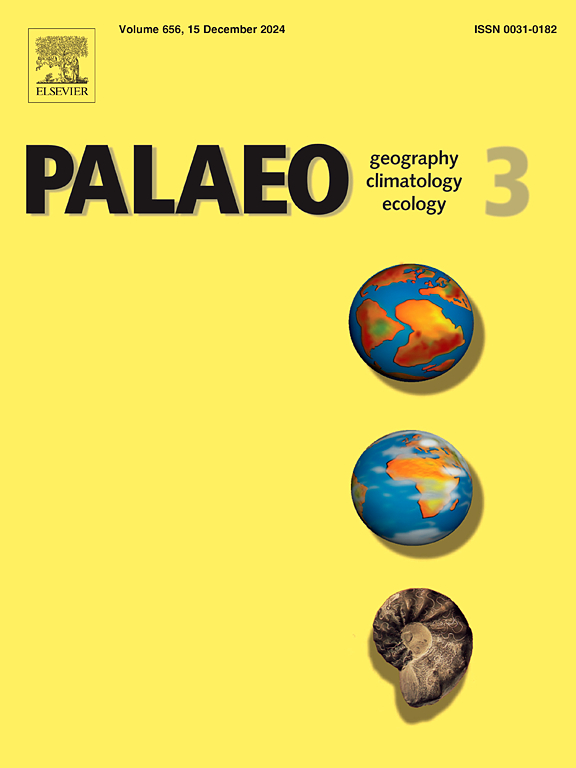Provenance of the Nantuo Formation in the Shennongjia region: Implications for the paleogeographic position of South China in Rodinia
IF 2.6
2区 地球科学
Q2 GEOGRAPHY, PHYSICAL
Palaeogeography, Palaeoclimatology, Palaeoecology
Pub Date : 2025-02-05
DOI:10.1016/j.palaeo.2025.112793
引用次数: 0
Abstract
The paleogeographic position and role of South China in the Rodinia supercontinent remain controversial. Sedimentary provenance analysis is an effective method for building linkages between continental fragments in supercontinent reconstructions. Systematic investigation of clastic sedimentary rocks in the Nantuo Formation—which preserve records of Rodinia's breakup—will advance our understanding of the paleogeographic evolution of South China during the Cryogenian. Here, we present new U-Pb ages and Hf isotopes of detrital zircons from the Cryogenian Nantuo Formation in the Shennongjia region along the northern margin of the Yangtze Block. Detrital zircons show three dominant age peaks at 820 Ma, 2100–1900 Ma, and 2750–2400 Ma, and one subordinate peak at 650 Ma. The youngest zircon groups yield a weighted average 206Pb/238U age of 649.8 ± 2.2 Ma, providing a maximum depositional age of ca. 650 Ma for the Nantuo Formation in the Shennongjia region. This age is consistent with the inferred age span (654–635 Ma) of the Nantuo Formation in other areas of South China. Based on the comprehensive analysis of new and published detrital zircon U-Pb ages and Hf isotope data, the clastic rocks of the Nantuo Formation in the Shennongjia region were mainly derived from the northern margin of the Yangtze Block. This result indicates that South China was located either on the periphery of or independent of Rodinia, rather than in its interior. Considering the Cathaysia Block of South China still received detritus from India during the Cryogenian, we suggest that the Yangtze Block was located off India and its combined Cathaysia Block was still linked with India during the Rodinia breakup.
求助全文
约1分钟内获得全文
求助全文
来源期刊
CiteScore
5.90
自引率
10.00%
发文量
398
审稿时长
3.8 months
期刊介绍:
Palaeogeography, Palaeoclimatology, Palaeoecology is an international medium for the publication of high quality and multidisciplinary, original studies and comprehensive reviews in the field of palaeo-environmental geology. The journal aims at bringing together data with global implications from research in the many different disciplines involved in palaeo-environmental investigations.
By cutting across the boundaries of established sciences, it provides an interdisciplinary forum where issues of general interest can be discussed.

 求助内容:
求助内容: 应助结果提醒方式:
应助结果提醒方式:


